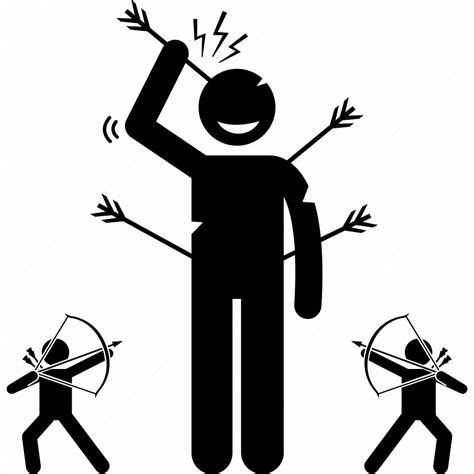
A mother is grappling with profound grief and self-doubt after both of her sons died by suicide, questioning whether she failed to equip them with the resilience needed to navigate life’s challenges.
A mother identified as Maureen is facing unimaginable grief after the suicides of both her sons, 26-year-old Ben and 22-year-old Josh. In a deeply personal essay, Maureen reflects on her sons’ lives, their struggles, and the agonizing question of whether she could have done more to prepare them for the pain and hardships of life. Her story has resonated with many, highlighting the complexities of parenting, mental health, and the enduring impact of suicide on families.
Maureen recounts the distinct personalities of her sons. Ben, the elder, was known for his infectious humor and sensitivity. Josh, the younger, was a deep thinker with a passion for philosophy. Despite their differences, both young men struggled with internal battles that ultimately led them to take their own lives. Ben died in 2018, and Josh followed in 2023.
In her essay, Maureen delves into the moments and memories that now haunt her, wondering if there were signs she missed or lessons she failed to impart. She questions whether her efforts to shield her sons from pain inadvertently weakened their ability to cope with adversity. “Did I do too much for them, so they didn’t develop the coping skills they needed?” she asks. This question underscores a common concern among parents: the balance between protecting children and preparing them for the inevitable challenges of adulthood.
Maureen’s story sheds light on the pervasive issue of mental health among young adults. The pressures of modern society, coupled with the unique challenges faced by each generation, can take a significant toll on their well-being. The deaths of Ben and Josh highlight the urgent need for increased awareness, access to mental health resources, and open conversations about suicide prevention.
The emotional impact of suicide on families is profound and long-lasting. Maureen’s essay captures the raw pain, confusion, and self-blame that often accompany such tragedies. The loss of a child is an unspeakable burden, and the added trauma of suicide can compound the grief and create a complex web of emotions. The ripple effects extend beyond the immediate family, impacting friends, communities, and future generations.
Maureen also reflects on the societal stigma surrounding mental health and suicide. She acknowledges that these issues are often shrouded in silence and shame, making it difficult for individuals to seek help. By sharing her story, she hopes to break down these barriers and encourage open dialogue about mental health. She emphasizes the importance of creating a culture where individuals feel safe and supported in seeking help without fear of judgment.
Her poignant reflection raises critical questions about parenting in an increasingly complex world. How can parents effectively prepare their children for the inevitable challenges of life while also providing a safe and nurturing environment? What role does society play in supporting the mental health of young people? These are questions that require ongoing discussion and collaboration among parents, educators, mental health professionals, and policymakers.
Maureen’s experience underscores the importance of fostering resilience in children from a young age. Resilience is the ability to bounce back from adversity and adapt to difficult situations. It is not about avoiding pain or hardship but rather about developing the skills and strategies needed to cope with it effectively.
Parents can foster resilience in their children by encouraging problem-solving skills, promoting a growth mindset, and providing a supportive and loving environment. It is also essential to teach children about the importance of self-care and seeking help when needed. Open communication is key, and parents should strive to create a safe space where children feel comfortable sharing their thoughts and feelings.
Maureen’s story serves as a reminder that mental health is just as important as physical health. Mental health conditions are common and treatable, and seeking help is a sign of strength, not weakness. It is crucial to provide young people with the resources and support they need to thrive. This includes access to mental health services, education about mental health, and efforts to reduce the stigma surrounding mental illness.
The deaths of Ben and Josh are a tragic loss, and Maureen’s story is a powerful testament to the enduring impact of suicide on families. By sharing her experience, she hopes to raise awareness, promote dialogue, and prevent future tragedies. Her essay is a call to action, urging individuals, families, and communities to prioritize mental health and work together to create a more supportive and compassionate world.
Maureen’s detailed account highlights specific instances where she now questions her parenting approach. She remembers shielding her sons from certain hardships, believing she was protecting them. Now, she wonders if those actions inadvertently prevented them from developing the coping mechanisms necessary to navigate life’s inevitable challenges. For example, she recalls intervening in minor conflicts with friends or teachers, attempting to smooth things over and protect her sons from experiencing discomfort. While her intentions were undoubtedly good, she now questions whether these interventions deprived her sons of the opportunity to learn how to resolve conflicts independently and build resilience.
She also reflects on the pressure she may have inadvertently placed on her sons to succeed. She acknowledges that she, like many parents, wanted her children to achieve their full potential and encouraged them to excel in school and extracurricular activities. However, she now wonders if this pressure contributed to their feelings of inadequacy and fear of failure.
Maureen emphasizes the importance of teaching children that it is okay to make mistakes and that failure is a natural part of the learning process. She believes that it is crucial for parents to create a safe space where children feel comfortable taking risks and learning from their experiences, without fear of judgment or criticism.
Furthermore, Maureen discusses the role of social media in the lives of young people. She acknowledges that social media can be a valuable tool for connecting with others and accessing information, but it can also contribute to feelings of anxiety, depression, and social isolation. She worries about the impact of social media on her sons’ self-esteem and their ability to form meaningful connections with others.
She encourages parents to have open and honest conversations with their children about the potential risks and benefits of social media. She also emphasizes the importance of setting boundaries and limiting screen time to ensure that children have ample opportunities to engage in real-world activities and develop healthy relationships.
Maureen also stresses the importance of seeking professional help when needed. She acknowledges that she and her family sought therapy at various points in their lives, but she now wonders if they could have done more. She encourages parents to be proactive in seeking mental health support for their children, especially if they are exhibiting signs of distress or struggling to cope with difficult situations.
She also highlights the importance of creating a supportive network of friends, family, and professionals. She believes that it is crucial for young people to have access to a variety of resources and individuals who can provide guidance, support, and encouragement.
Maureen’s reflection also touches upon the unique challenges faced by young men in today’s society. She observes that young men are often socialized to suppress their emotions and to avoid seeking help when they are struggling. She believes that it is crucial to challenge these harmful stereotypes and to create a culture where young men feel comfortable expressing their emotions and seeking support without fear of judgment.
She encourages parents to teach their sons about the importance of emotional intelligence and to help them develop healthy coping mechanisms for dealing with stress and adversity. She also emphasizes the importance of modeling healthy behavior and demonstrating that it is okay to be vulnerable and to ask for help.
Maureen’s story is a poignant reminder of the importance of prioritizing mental health and creating a more supportive and compassionate world. It is a call to action, urging individuals, families, and communities to work together to prevent future tragedies.
The National Suicide Prevention Lifeline (now known as the 988 Suicide & Crisis Lifeline) and the Crisis Text Line are valuable resources for individuals who are struggling with suicidal thoughts or mental health issues. These services provide confidential, free, and immediate support to individuals in crisis. They are available 24 hours a day, 7 days a week.
Maureen hopes that by sharing her story, she can help other families avoid the pain and heartbreak that she has experienced. She encourages parents to be open and honest with their children, to prioritize mental health, and to seek help when needed. She also emphasizes the importance of creating a supportive and loving environment where children feel safe and secure.
The rewritten news article provides a comprehensive overview of Maureen’s story, highlighting the key themes and issues raised in her essay. It also includes relevant statistics, resources, and information about suicide prevention and mental health. The article aims to provide readers with a deeper understanding of the complexities of suicide and the importance of prioritizing mental health.
The details shared by Maureen serve as a cautionary tale, urging parents to reflect on their parenting styles and to consider the potential impact of their actions on their children’s mental health. It is a reminder that parenting is a complex and challenging endeavor, and there is no one-size-fits-all approach.
Ultimately, Maureen’s story is a testament to the enduring power of love and the importance of connection. Even in the face of unimaginable loss, she remains committed to sharing her story and advocating for mental health awareness. Her courage and vulnerability are an inspiration to others, and her story serves as a reminder that we are all in this together.
Further context to this story includes understanding the rising rates of suicide, particularly among young people. According to the Centers for Disease Control and Prevention (CDC), suicide is a leading cause of death in the United States, and rates have been increasing in recent years. Suicide is a complex issue with no single cause, but factors such as mental health conditions, substance abuse, trauma, and social isolation can all contribute.
The CDC also notes that suicide rates vary by age, sex, race, and ethnicity. Suicide is more common among men than women, and it is more common among certain racial and ethnic groups, such as American Indian/Alaska Native populations. Young adults and adolescents are also at increased risk of suicide.
These statistics highlight the urgent need for increased awareness, prevention efforts, and access to mental health services. It is crucial to identify individuals who are at risk of suicide and to provide them with the support and resources they need.
In addition to the CDC, organizations such as the National Institute of Mental Health (NIMH) and the Substance Abuse and Mental Health Services Administration (SAMHSA) are also working to address the issue of suicide. These organizations conduct research, develop prevention programs, and provide resources to individuals, families, and communities.
It is important to remember that suicide is preventable. By working together, we can create a more supportive and compassionate world where individuals feel safe and empowered to seek help when they are struggling.
Maureen’s story underscores the need for a multi-faceted approach to suicide prevention. This includes addressing mental health conditions, promoting healthy coping mechanisms, reducing access to lethal means, and fostering a sense of connection and belonging.
It also requires challenging the stigma surrounding mental health and suicide. Many individuals are reluctant to seek help because they fear judgment or discrimination. It is crucial to create a culture where individuals feel comfortable talking about their mental health and seeking support without fear of reprisal.
Parents, educators, and community leaders all have a role to play in suicide prevention. Parents can create a safe and loving environment where children feel comfortable sharing their thoughts and feelings. Educators can incorporate mental health education into the curriculum and provide students with access to mental health resources. Community leaders can promote awareness and support suicide prevention efforts in their communities.
Ultimately, suicide prevention is a shared responsibility. By working together, we can create a more supportive and compassionate world where individuals feel valued, respected, and connected.
The legacy of Ben and Josh lives on through Maureen’s advocacy. She hopes that their story will inspire others to prioritize mental health and to seek help when needed. She is committed to working to create a world where no other family has to experience the pain and heartbreak that she has endured.
The rewritten news article provides a comprehensive and informative overview of Maureen’s story, highlighting the key themes and issues raised in her essay. It also includes relevant statistics, resources, and information about suicide prevention and mental health. The article aims to provide readers with a deeper understanding of the complexities of suicide and the importance of prioritizing mental health.
Frequently Asked Questions (FAQ)
1. What are the main concerns expressed by the mother in the article?
The mother, Maureen, expresses deep grief and self-doubt following the suicides of her two sons. She questions whether she adequately prepared them to cope with life’s challenges, wondering if she shielded them too much, hindering their ability to develop resilience and effective coping mechanisms. She also reflects on the societal pressures and the stigma surrounding mental health, and the potential impact of social media on her sons’ well-being.
2. What key factors contribute to the mental health challenges faced by young adults, as highlighted in the article?
The article points to a combination of factors, including the pressures of modern society, academic and career expectations, potential social isolation exacerbated by social media, and the stigma associated with mental health issues that can prevent individuals from seeking help. Maureen also wonders if she inadvertently placed pressure on her sons, contributing to their feelings of inadequacy and fear of failure.
3. How does the article emphasize the importance of fostering resilience in children?
The article underscores the need for parents to encourage problem-solving skills, promote a growth mindset, and provide a supportive and loving environment. It highlights the importance of teaching children that making mistakes is okay and that failure is a natural part of the learning process. It encourages parents to create a safe space where children feel comfortable taking risks and learning from their experiences. The article also mentions fostering resilience by encouraging children to develop coping skills and by teaching them the importance of self-care.
4. What resources are mentioned in the article for individuals struggling with suicidal thoughts or mental health issues?
The article mentions the 988 Suicide & Crisis Lifeline (formerly the National Suicide Prevention Lifeline) and the Crisis Text Line as valuable resources. These services provide confidential, free, and immediate support to individuals in crisis, available 24/7. Additionally, the article references the Centers for Disease Control and Prevention (CDC), the National Institute of Mental Health (NIMH), and the Substance Abuse and Mental Health Services Administration (SAMHSA) as organizations working to address suicide prevention.
5. What is the overall message or call to action conveyed by Maureen’s story?
Maureen’s story serves as a call to action, urging individuals, families, and communities to prioritize mental health and work together to create a more supportive and compassionate world. She encourages parents to be open and honest with their children, to seek professional help when needed, and to create a loving environment where children feel safe and secure. The article underscores the need for a multi-faceted approach to suicide prevention, including addressing mental health conditions, promoting healthy coping mechanisms, and challenging the stigma surrounding mental health.








